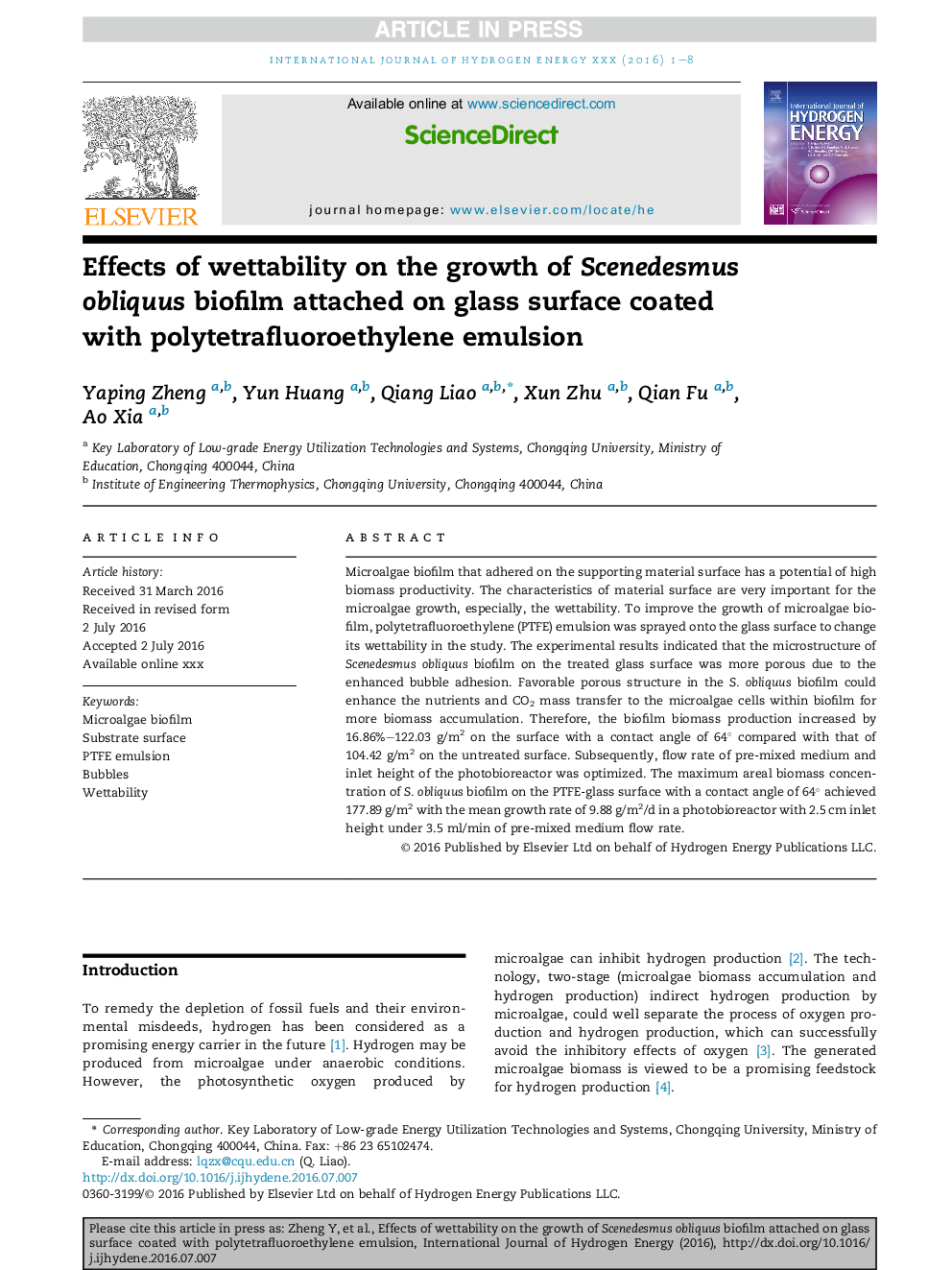| Article ID | Journal | Published Year | Pages | File Type |
|---|---|---|---|---|
| 5146920 | International Journal of Hydrogen Energy | 2016 | 8 Pages |
Abstract
Microalgae biofilm that adhered on the supporting material surface has a potential of high biomass productivity. The characteristics of material surface are very important for the microalgae growth, especially, the wettability. To improve the growth of microalgae biofilm, polytetrafluoroethylene (PTFE) emulsion was sprayed onto the glass surface to change its wettability in the study. The experimental results indicated that the microstructure of Scenedesmus obliquus biofilm on the treated glass surface was more porous due to the enhanced bubble adhesion. Favorable porous structure in the S. obliquus biofilm could enhance the nutrients and CO2 mass transfer to the microalgae cells within biofilm for more biomass accumulation. Therefore, the biofilm biomass production increased by 16.86%-122.03 g/m2 on the surface with a contact angle of 64° compared with that of 104.42 g/m2 on the untreated surface. Subsequently, flow rate of pre-mixed medium and inlet height of the photobioreactor was optimized. The maximum areal biomass concentration of S. obliquus biofilm on the PTFE-glass surface with a contact angle of 64° achieved 177.89 g/m2 with the mean growth rate of 9.88 g/m2/d in a photobioreactor with 2.5 cm inlet height under 3.5 ml/min of pre-mixed medium flow rate.
Related Topics
Physical Sciences and Engineering
Chemistry
Electrochemistry
Authors
Yaping Zheng, Yun Huang, Qiang Liao, Xun Zhu, Qian Fu, Ao Xia,
